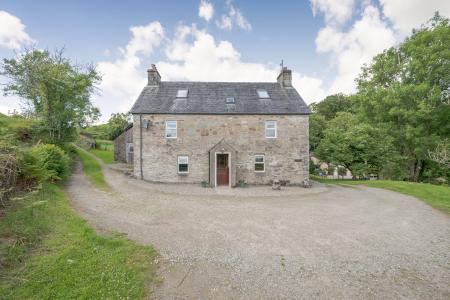
The cairn is about 30 metres across and up to 2 metres high. It was excavated in 1864 when 3 burial chambers were discovered. The central chamber contained remains of several cremations over top of a skeleton laid out in a crouched position. More unusual, on the top of the slab covering the chamber a body had been laid out with its limbs straight.
The middle cist had remains of cremations, but the third cist caused great excitement; it contained the remains of 10 people, some cremated and some left unburned, beneath a huge capstone about 4.2 metres long. Interred with the bones were tools including a whetstone, flint knife, and stone axe. The unusual feature is simply that so many people were interred together, unlike usual Bronze Age custom.
A stone's throw away from the cairn is Baluachraig Cup and Ring marked stones, also in the care of Historic Scotland.
The cairn is rather oddly situated in a plantation of rare trees laid out in the Victorian period. The car park for Dunchraigraig is on the opposite side of the road to the cairn (i.e. on the east side), so be careful of traffic while crossing the road.


 We've 'tagged' this attraction information to help you find related historic attractions and learn more about major time periods mentioned.
We've 'tagged' this attraction information to help you find related historic attractions and learn more about major time periods mentioned.




